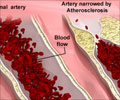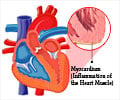- Cardiovascular diseases are the leading cause of mortality in the western world
- Sirtuin-3 molecule may be able to slow down cardiovascular disease progression
Death in Young Athletes During Physical Activity
Young athletes who experience cardiac failure are often due to a health condition known as Arrhythmogenic right ventricular cardiomyopathy (ARVC). Half of all cases of sudden cardiac arrest in athletes occurring during physical activity are assumed to be caused by ARVC.“We have identified a previously unknown disease mechanism in ARVC, which adds a new layer of information that no one knew about,” she says.
A flaw deep inside the cardiac cells’ nuclei, which controls the contraction of the heart muscle, is the previously unidentified mechanism. Cell death is the result of the defect's knock-on effects.
“Based on the new insights we obtained, we identified a molecule that may be able to slow down disease progression,” says Alicia Lundby from the Department of Biomedical Sciences at the University of Copenhagen.
Alicia Lundby and her associates examined heart samples from healthy people and patients with inherited ARVC. They thoroughly and supposedly molecularly profiled the cardiac samples and discovered the molecular variations between the hearts. They developed disease-cause hypotheses based on these measures. They evaluated them using mouse models and heart muscle cells produced from stem cells.
Halting the Progress of Cardiovascular Diseases
The scientists discovered that they could stop the progression of ARVC by turning on a particular molecule called sirtuin-3. So, they began looking for a molecule with that property.“Doing the types of studies we do, analyzing several thousands of proteins at a time, is challenging when trying to understand what the changes we measure mean. This part of the work requires delving into the scientific literature. So, you read and read and read. And talk to colleagues, think and read some more. It is months of detective work. And it’s both stimulating and frustrating at times. Because it is certainly not straightforward.”
The effort does not end here. A follow-up study by the researchers aims to investigate their findings.
“We believe our findings are significant, and we want to determine whether they can help patients. The next step is to determine whether the mechanism we identified is present in all ARVC patients,” says Alicia Lundby.
Source-Medindia
















